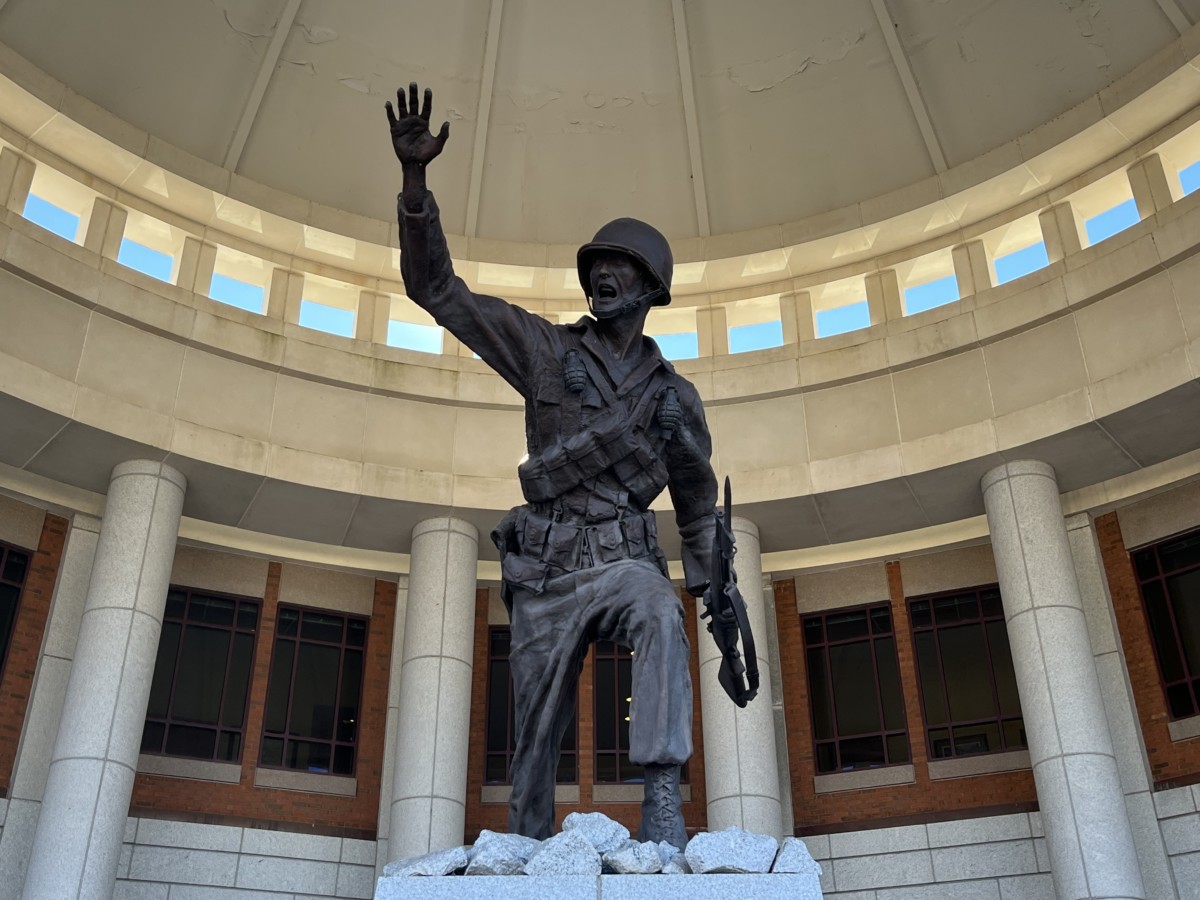During the pandemic, we researched places to visit close to us. One museum that we put on our list was the National Infantry Museum and Soldier Center in Columbus, Georgia. Closed for 20 months, the museum finally reopened last Thanksgiving and we made our way to see it.
Even though I’m not into war history, I found the exhibits engaging and interesting. With so much to see, we could have easily toured just half of the museum and come back later for the rest. Another huge plus is that the National Infantry Museum is completely free to visit. Although they suggest a $5 donation per person, we found that price well worth it.
Founded in 2009, the museum is located at Fort Benning, the 5th largest army base in the US. Security guards checked our bags and the museum staff gave us a map after we entered. Following the arrows, we began our journey through the museum.
Main Floor
Last 100 Years Ramp
A rounded structure introduces visitors to the seven army values of loyalty, duty, respect, selfless service, honor, integrity, and personal courage. Going up the Last 100 Yards Ramp, low lighting and background music transported us through major battles beginning with Yorktown.
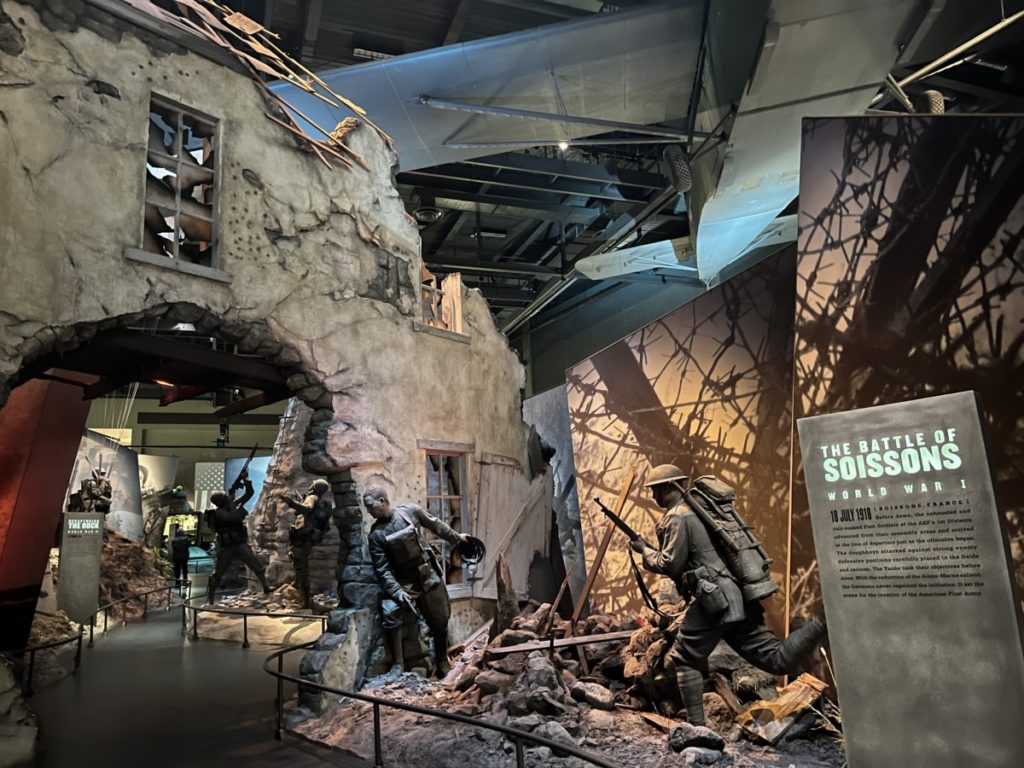
The lifesize WWII dioramas featured both the European and Pacific theatres. The D-Day invasion of Normandy features Army Rangers scaling a large rock wall. Battle film clips play on the rocks. In the Pacific theatre, a US Army Paratrooper lands in the Philippines. The inside of his parachute plays battle scenes from the recapture of Fortress Corregidor in 1945.
The figures seemed larger than life. However, I later learned Active Duty Soldiers actually posed for artists to create cast sculptures throughout the museum.
Temporary Exhibit on 9/11
What got me most was seeing a piece of airplane wreckage found after 9/11. Knowing that when the builder drilled those nuts in, they had no idea that the plane would be used in a devastating terror attack, made me really think about that day. Other displays included doors from NYPD and NYFD vehicles, as well as a piece of the World Trade Center.
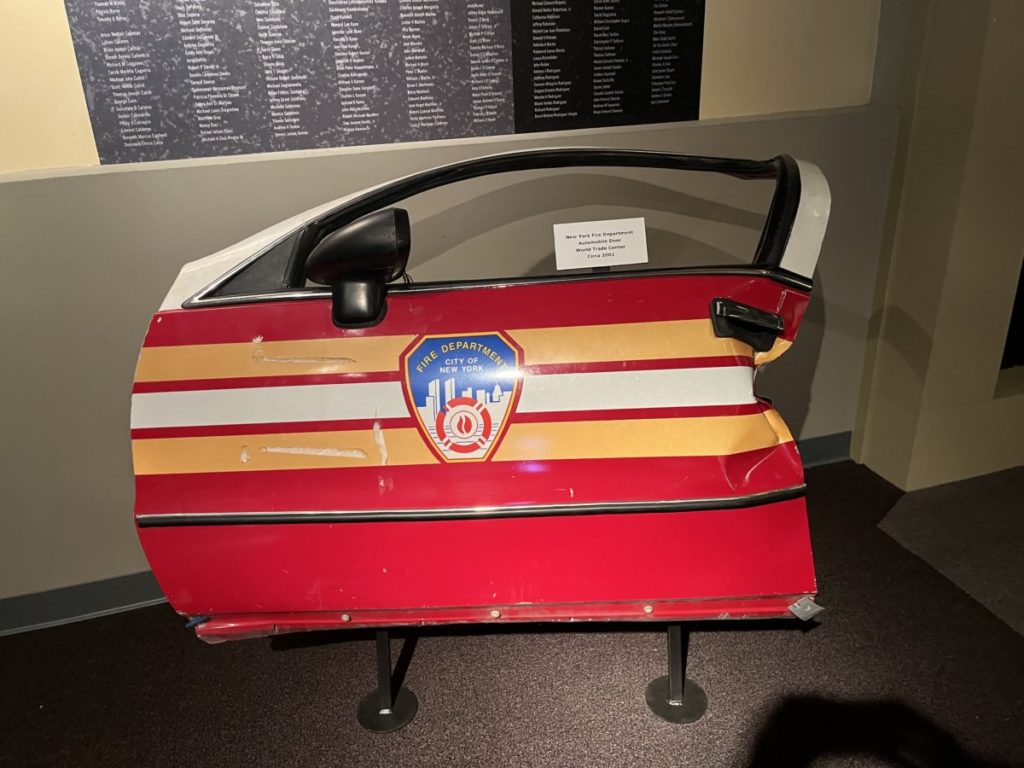
A TV screen replayed dispatch calls. These weren’t the sweet “I love you” messages we heard on the news. Instead, they played more disturbing voice recordings of people scared to die. Another scene shows an air traffic controller learning the plane in Pennsylvania went down. Mistakenly thinking “down” meant it landed safely, she said something to the effect of “Good, I’m glad it landed.” The next voice says, “No, it went down.” Her shocked and sad response followed. In a weird way, it hit me harder than the National 9/11 Memorial Museum in NYC.
Fort Benning Gallery
This section shows visitors what it’s like to undergo the six months basic training at Fort Benning’s Infantry School as well the history of the area. Originally a temporary wartime encampment in 1918, Fort Benning became permanent and included the School of Infantry. Later renamed after Confederate soldier Henry L. Benning from the Columbus area, the Army post trained the first Black paratrooper battalion, began the Ranger School (which it still operates today), and operated the Scout Dog Training Detachment through the Vietnam War. Famous leaders Dwight Eisenhower, George Marshall, and Colin Powell all spent time at Fort Benning as well.
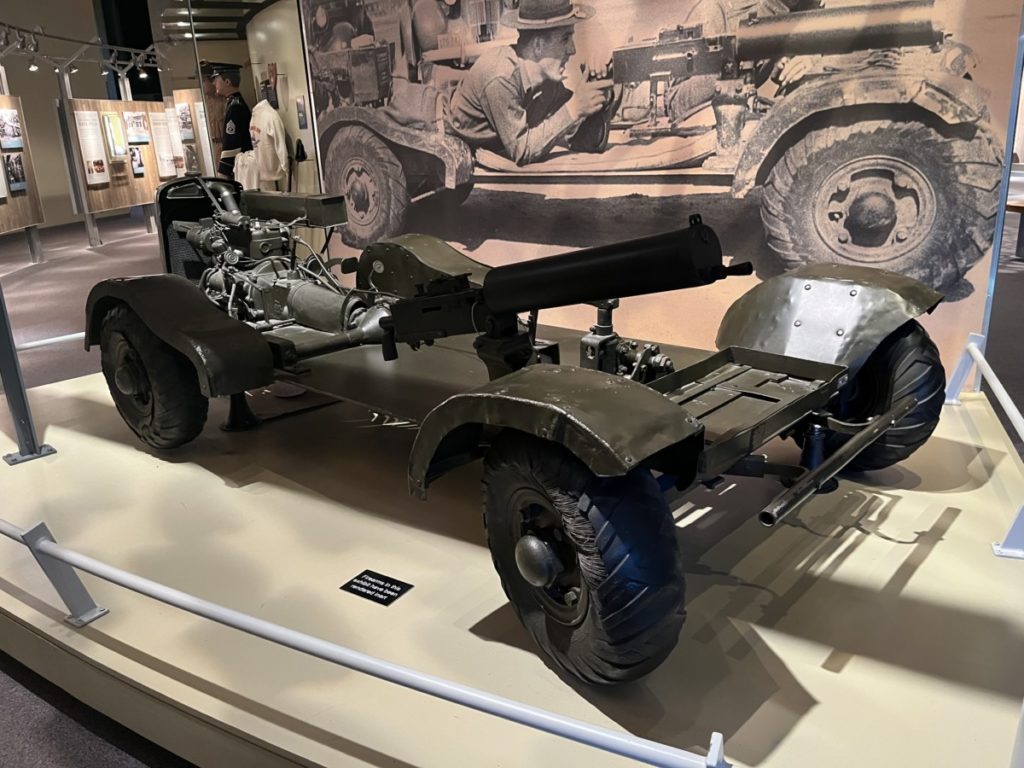
Artifacts included US Army helmets, goggles, and even a field telephone from 1917 connected to string telephone wires. Of particular interest is the “Belly Flopper”. Developed at Fort Benning, the two-man automatic weapons carrier never entered production because it rode too low to the ground, but it served as the basis for the WWII Jeep.
Before heading downstairs to the next exhibits, we peered through the window at the 5-acre Inouye Field. Landscape architects seeded the field, used for Army Infantry School graduations and other ceremonies, with soil from each of the battles represented in the Last 100 Yards exhibit.
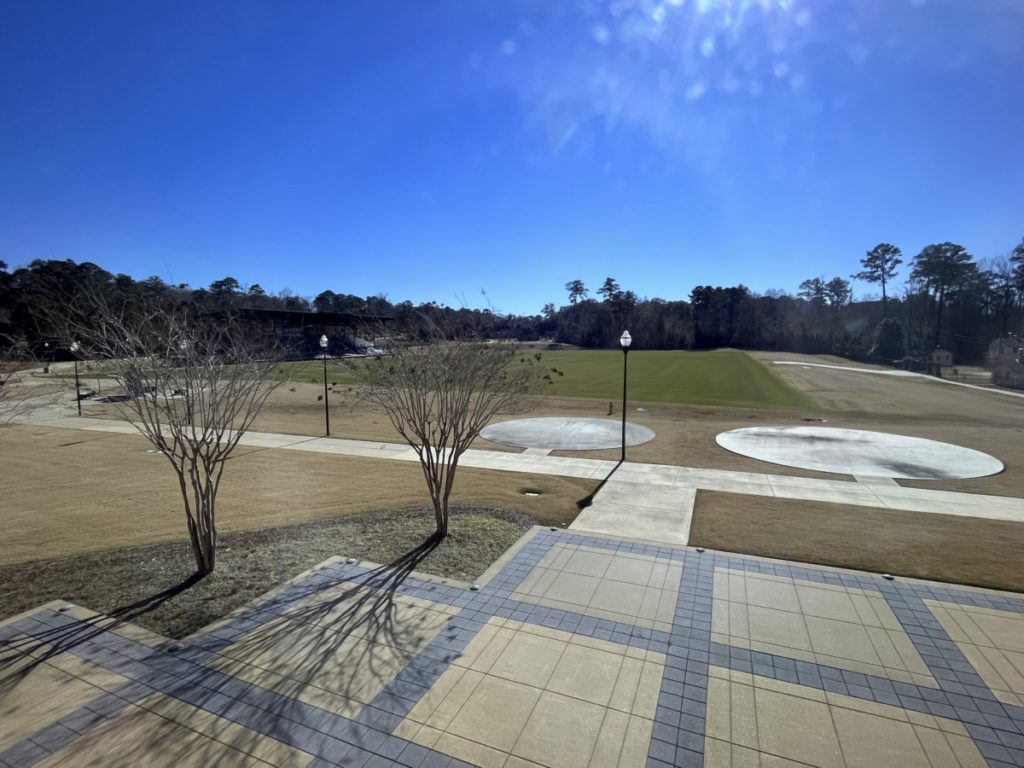
Adjacent to the parade ground, lies WWII Company Street. Restored buildings show what Fort Benning would have looked like during WWII, including General George S. Patton’s sleeping quarters. Other buildings include a chapel, supply room, orderly room, and barracks.
Bottom Floor
Before walking into the galleries coming off the main hall downstairs, we stopped to look at mannequins wearing military uniforms. They’ve definitely come a long way!
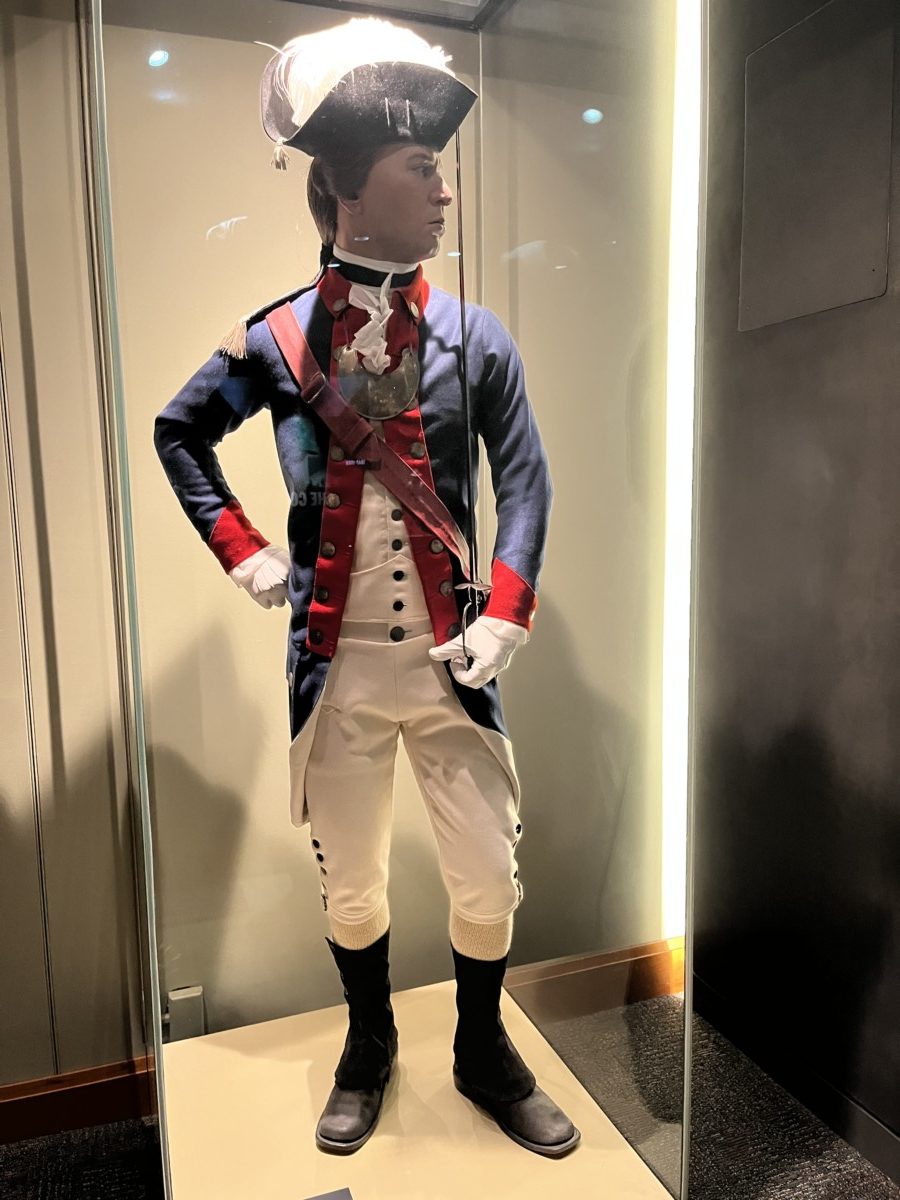
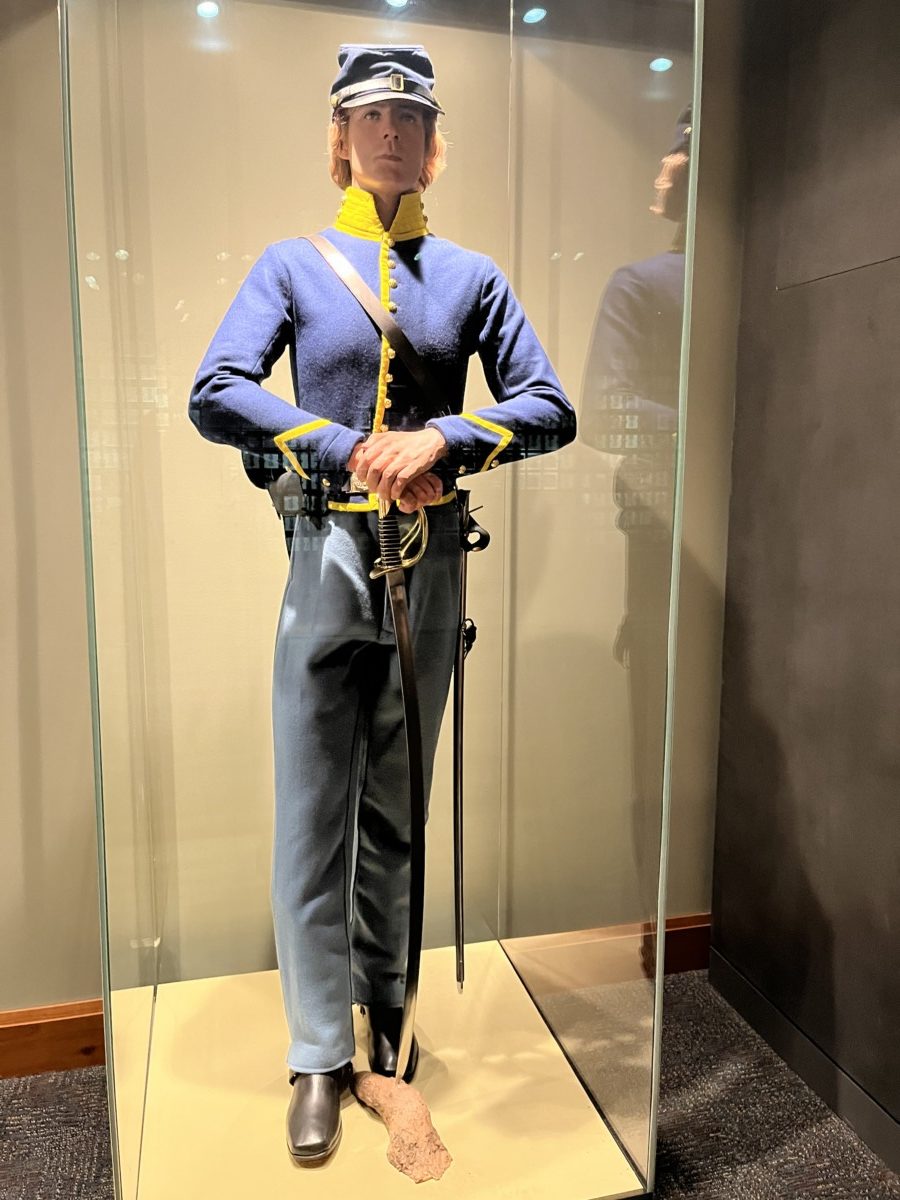
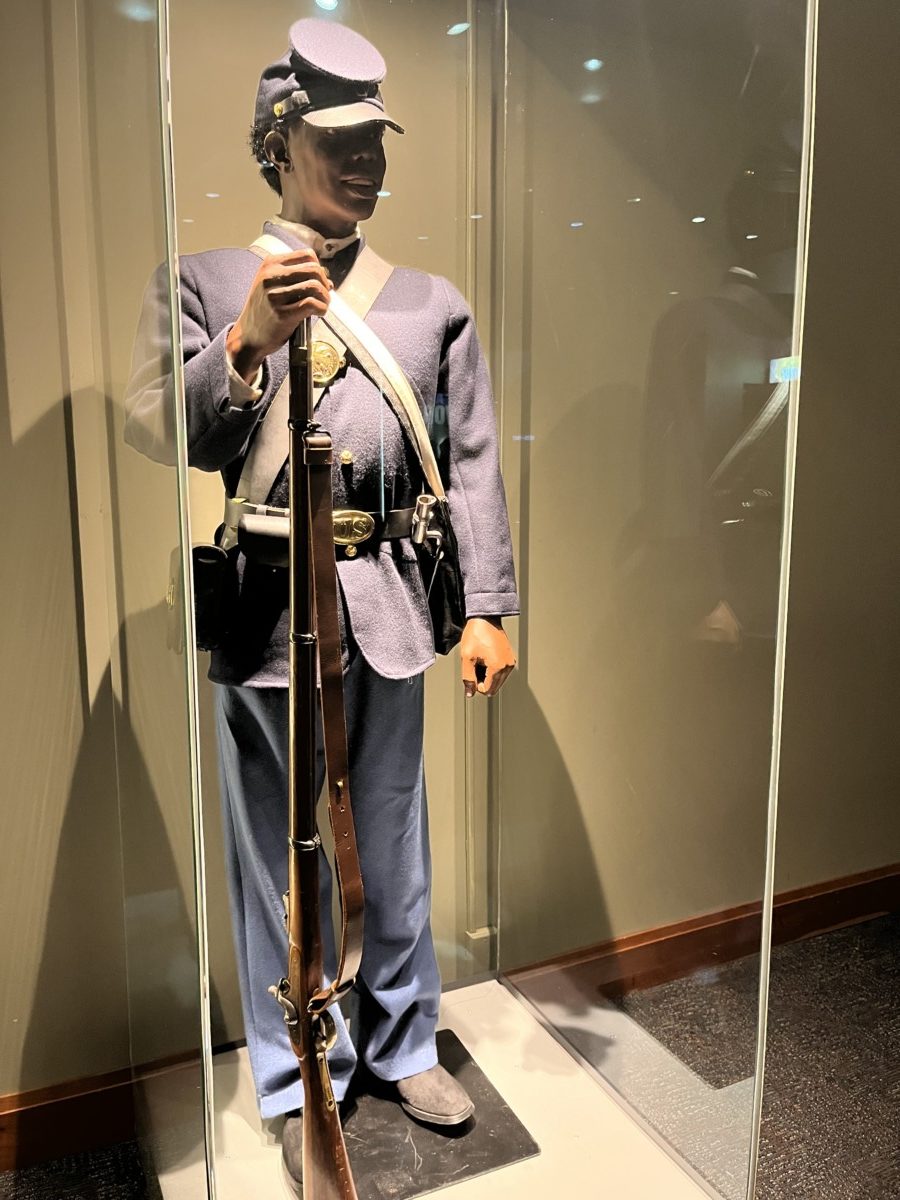
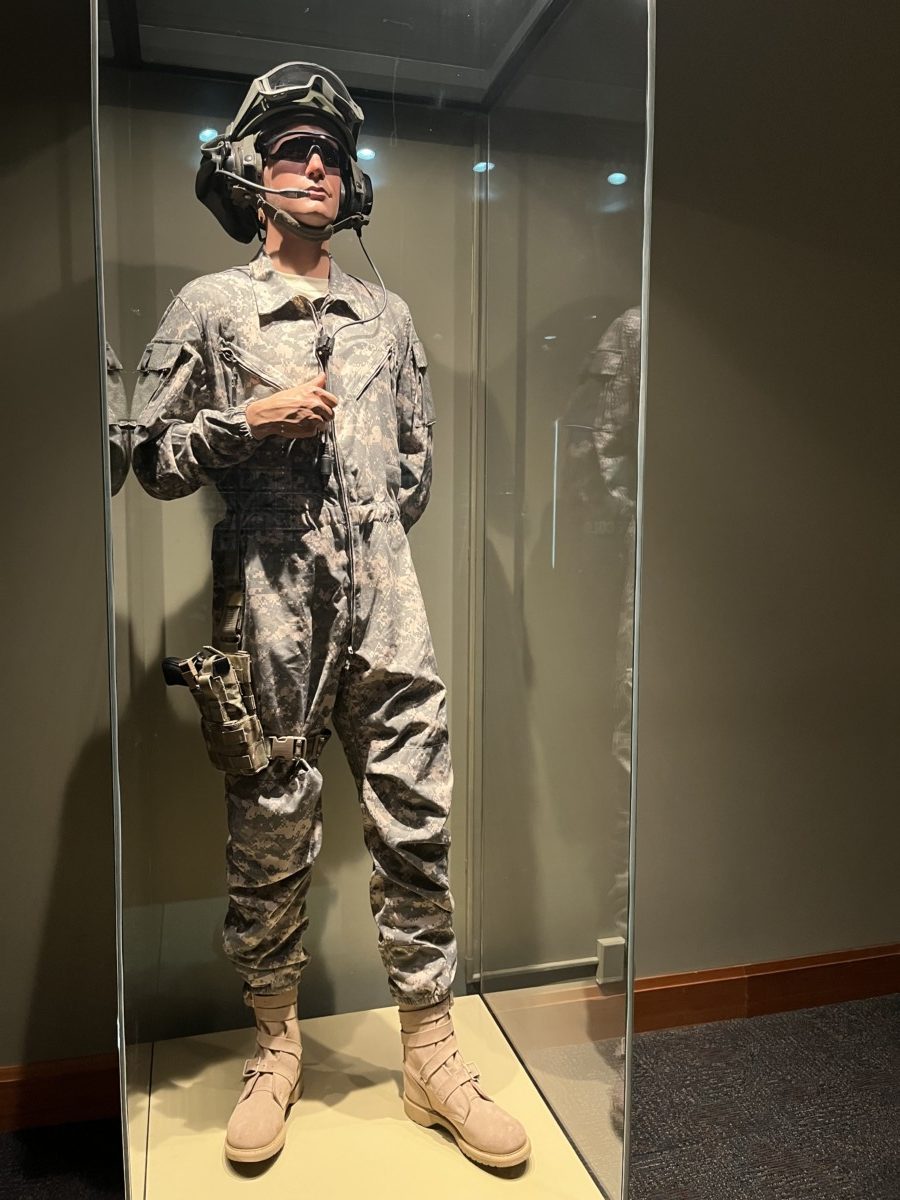
Armor & Calvary Gallery
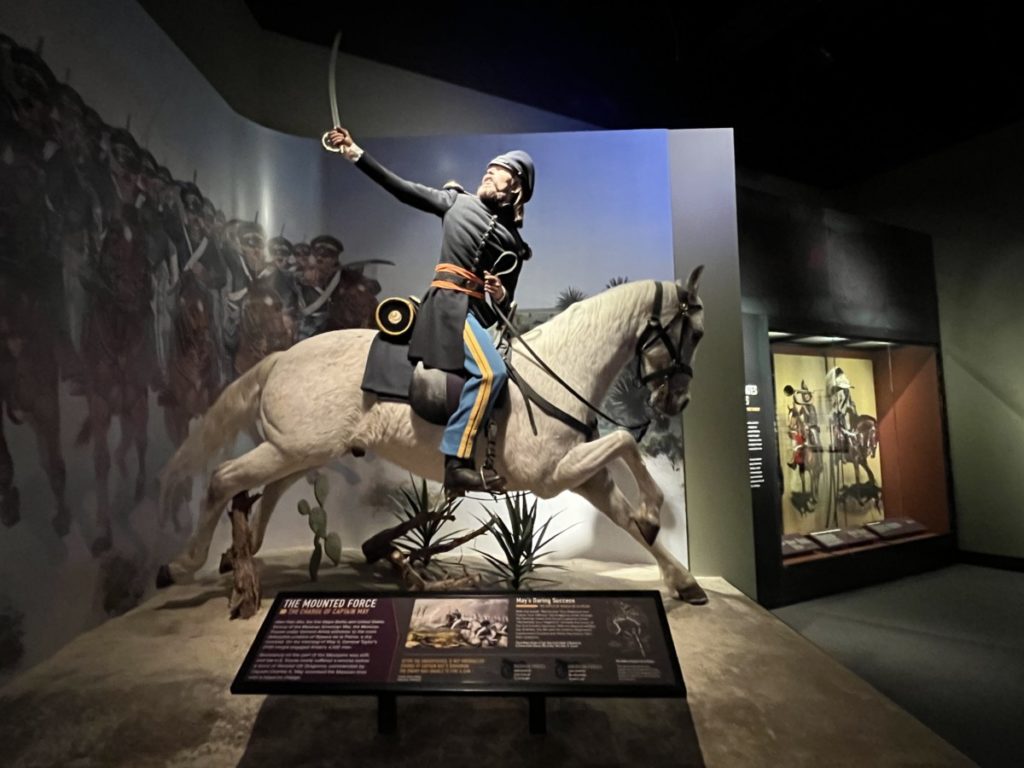
Eras of Infantry Galleries
The downstairs houses Eras of Infantry galleries. Securing Our Freedom/Defining Our Nation focuses on the Revolutionary War, Civil War, and Frontier Indian Wars period from 1775-1898. Visitors learn about the importance of drummer boys and bugle calls, as well as how the Minie ball bullet used in the Civil War caused increased casualties due to greater accuracy and range.
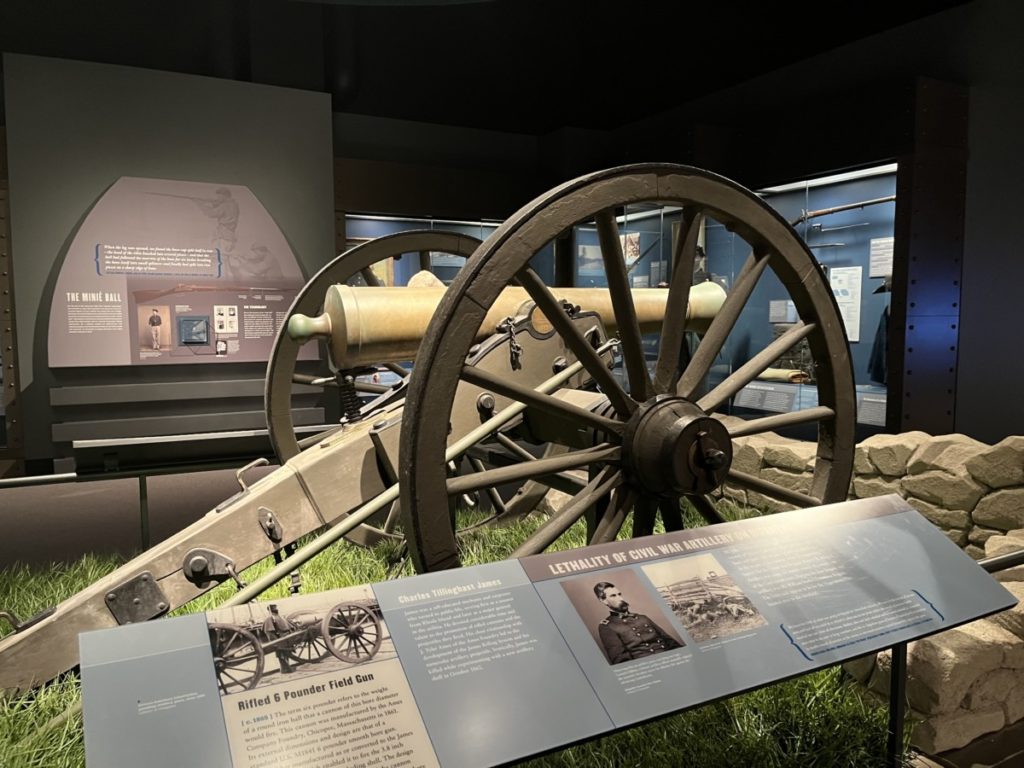
The International Stage details the history of battles from 1898 to 1920. I knew a little about the Spanish-American War, but nothing about the Philipines Campaign from 1898 to 1902. We listened to shells drop while walking through the trenches of WWI. A periscope gave a view of battle scenes above the earth’s rim while artifacts showed the evolution of weapons. Just as the Minie bullet changed warfare in the Civil War, the machine gun changed warfare during WWI. Needing a method to withstand machine gunfire, armies began using tanks to cross the zone between trenches.
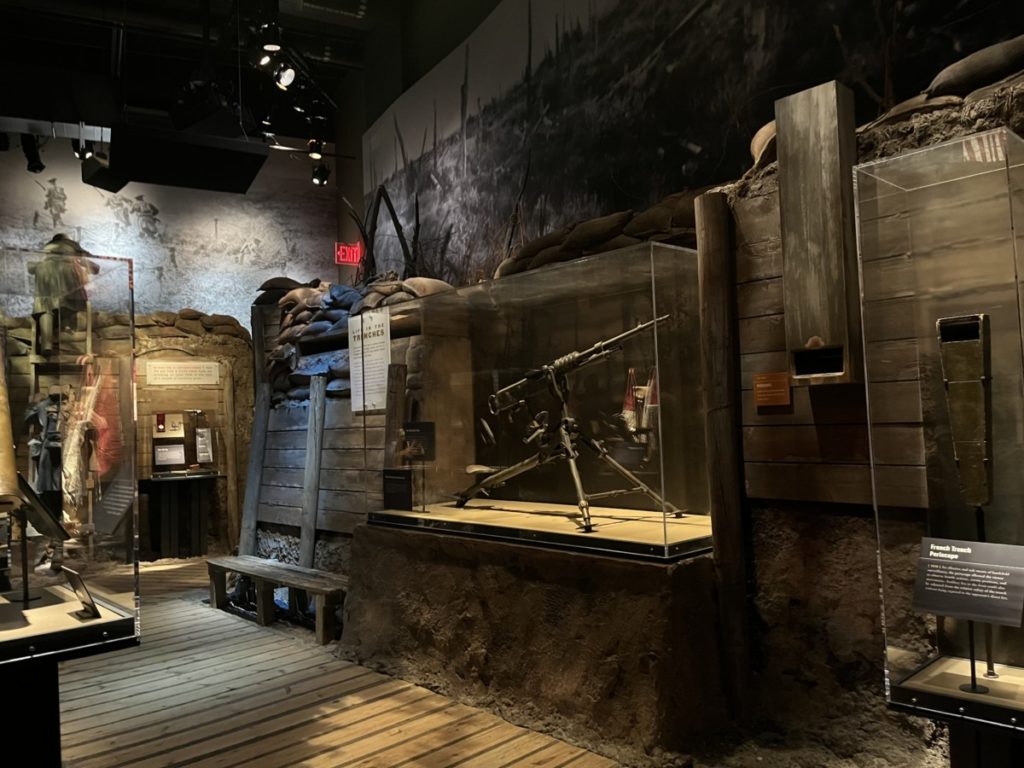
Lunch Break
Mistakenly thinking the museum would only take an hour to visit, we didn’t eat lunch beforehand. Getting hungry, we wandered upstairs to the concession stand outside the big-screen theatre. Although the pizza and popcorn weren’t great, the food was what we needed before exploring the rest of the galleries. The Fife and Drum Cafe on the mezzanine level serves sandwiches and soup but is closed until further notice.
Remaining Eras of Infantry
A World Power (1920-1947) concentrates on the events leading up to WWII, the attack on Pearl Harbor, the European and Pacific theatres of WWII, and the atomic bomb. Periodically, you could play voice recordings to hear soldiers’ accounts of certain battles and glass-encased models showed the terrain conditions of battles. A section on the Holocaust is well done and we could listen to soldiers describing the inhumane conditions when they found the concentration camps.
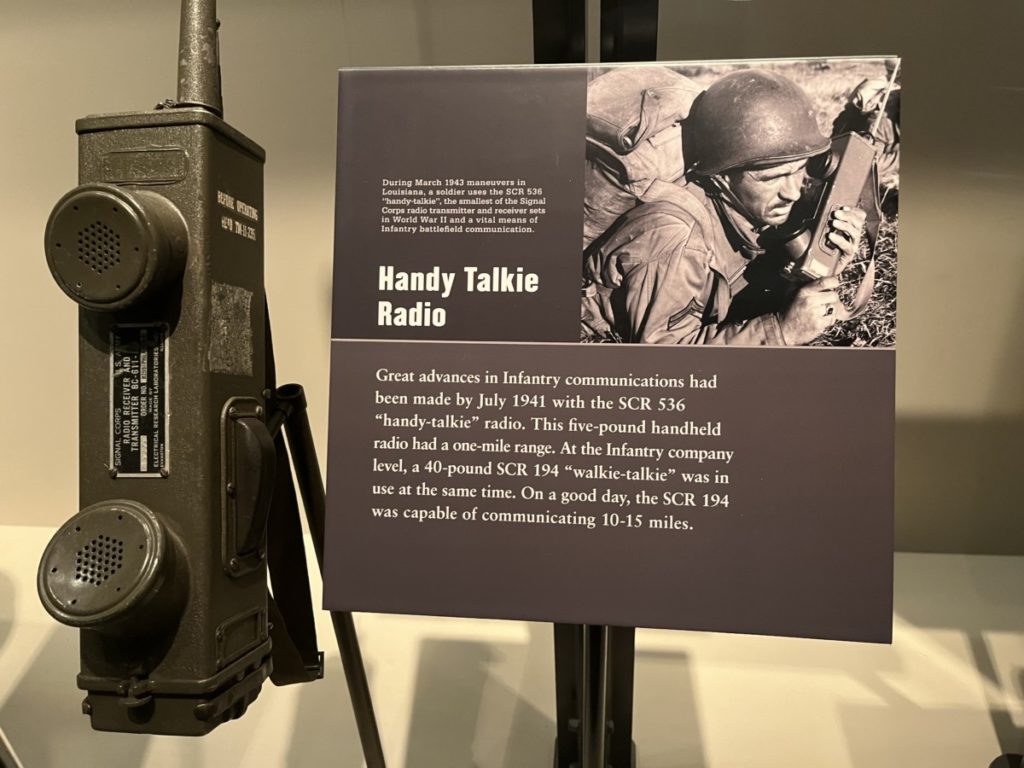
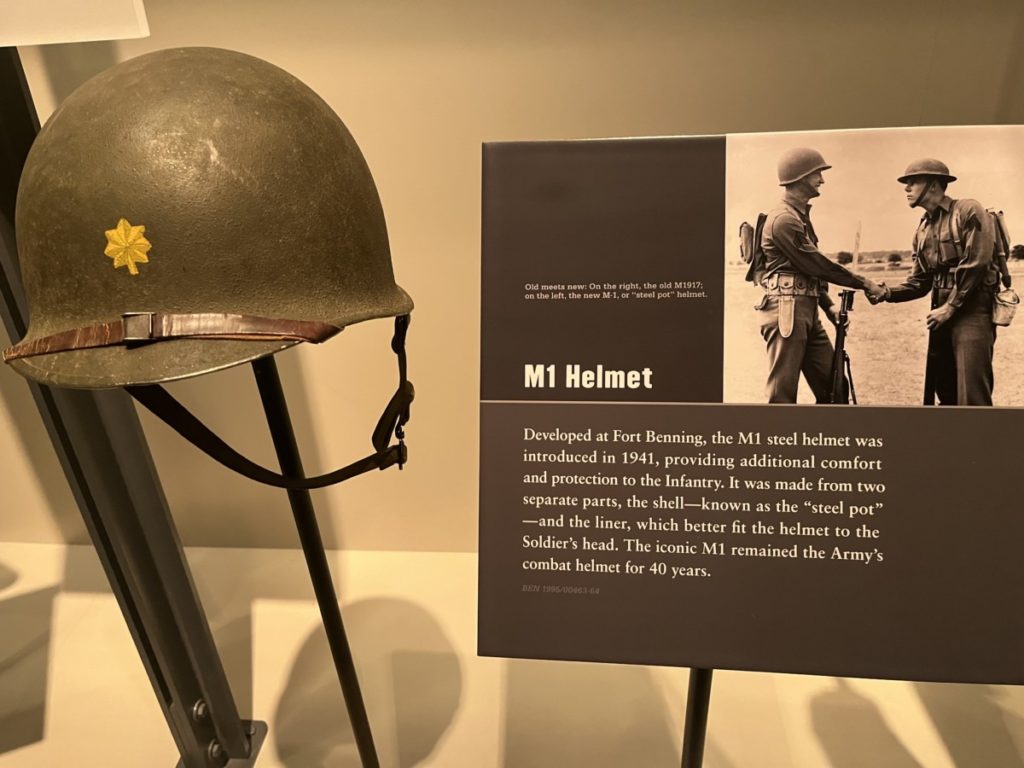
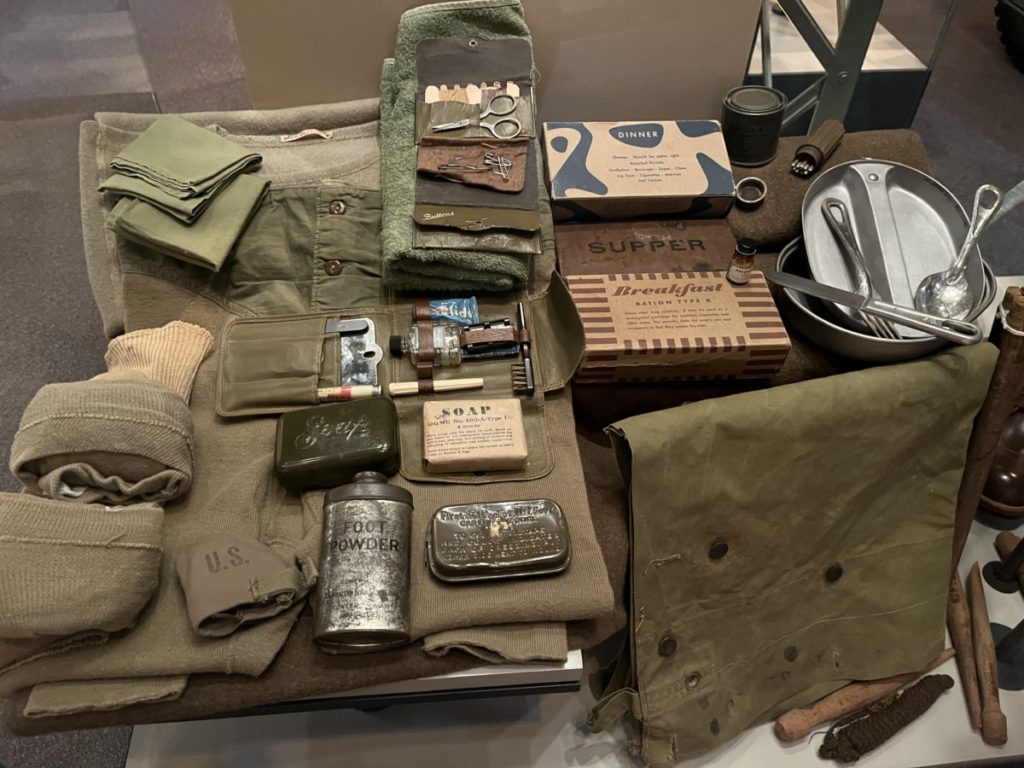
The Cold War (1947-1989) primarily focuses on the Koren War and Vietnam. However, the Cold War and the effort to stop communist spread did lead to both conflicts. The most interactive exhibit is where visitors enter a simulated Vietnamese jungle at night to experience conditions the soldiers faced. Because it is so realistic, a sign tells guests not wanting to enter how to bypass it. A section on POWs is followed by the fall of the Berlin Wall with President Ronald Reagan commanding, “President Gorbachev, tear down this wall!”
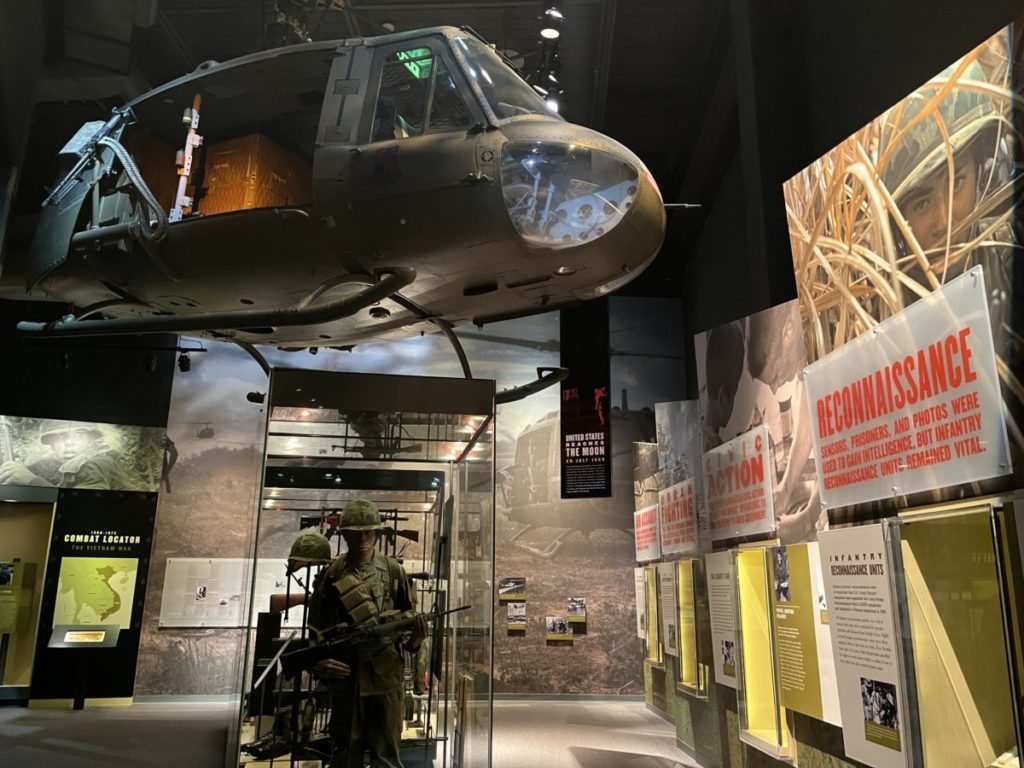
The final gallery, The Sole Superpower (1989-Present) covers the Gulf War, Bosnia, Somalia, Haiti, and the Global War on Terrorism. To be honest, I was getting tired and was running on information overload.
Hall of Valor
Before leaving, we stopped in the Hall of Valor. Begun during the Civil War, the Medal of Honor recognizes those in the armed forces exhibiting well-documented bravery. A computer kiosk allows guests to look up recipients.
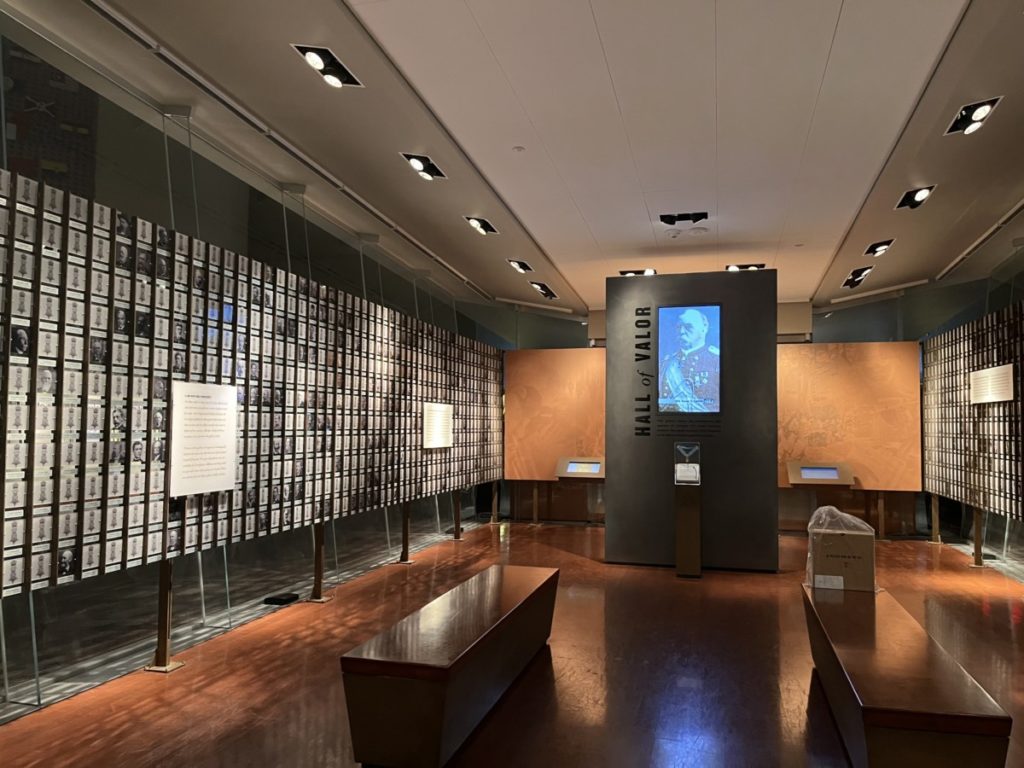
The museum is so large it definitely warrants another visit. I’d like to go back soon to tour the outside areas including WWII Company Street, the Vietnam Memorial Plaza, and the Global War on Terrorism Memorial. Plus, I’d spend more time on the more recent exhibits.
For more information, visit their website here.
